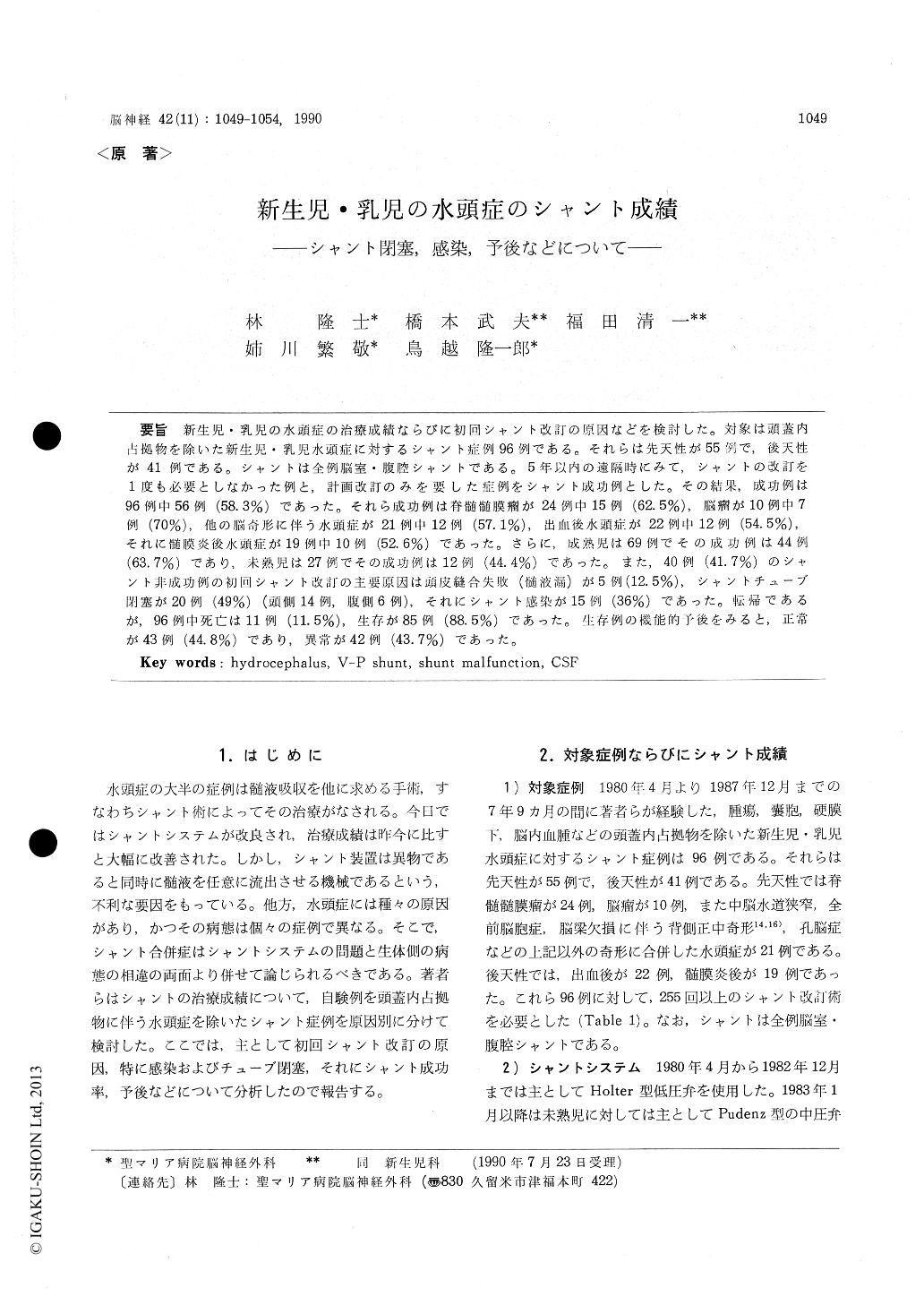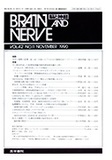Japanese
English
- 有料閲覧
- Abstract 文献概要
- 1ページ目 Look Inside
新生児・乳児の水頭症の治療成績ならびに初回シャント改訂の原因などを検討した。対象は頭蓋内占拠物を除いた新生児・乳児水頭症に対するシャント症例96例である。それらは先天性が55例で,後天性が41例である。シャントは全例脳室・腹腔シャントである。5年以内の遠隔時にみて,シャントの改訂を1度も必要としなかった例と,計画改訂のみを要した症例をシャント成功例とした。その結果,成功例は96例中56例(58.3%)であった。それら成功例は脊髄髄膜瘤が24例中15例(62.5%),脳瘤が10例中7例(70%),他の脳奇形に伴う水頭症が21例中12例(57.1%),出血後水頭症が22例中12例(54.5%),それに髄膜炎後水頭症が19例中10例(52.6%)であった。さらに,成熟児は69例でその成功例は44例(63.7%)であり,未熟児は27例でその成功例は12例(44.4%)であった。また,40例(41.7%)のシャント非成功例の初回シャント改訂の主要原因は頭皮縫合失敗(髄液漏)が5例(12.5%),シャントチューブ閉塞が20例(49%)(頭側14例,腹側6例),それにシャント感染が15例(36%)であった。転帰であるが,96例中死亡は11例(11.5%),生存が85例(88.5%)であった。生存例の機能的予後をみると,正常が43例(44.8%)であり,異常が42例(43.7%)であった。
Although ventriculoperitoneal (V-P) shunt is common as the surgical procedure for hydrocepha-lus, mechanical malfunction and infection are the most significant problems. Despite the current use of variety of mechanical shunting systems, shunt malfunction remains a major problem in pedi-atric neurosurgical practice. Pathological lesions associated with malfunctioning shunts have been studied only infrequently. From April 1980 to December 1987, we experienced 96 cases of V-P shunt in neonates and suckling. The therapeutic results of shunting and causes of initial shunt revi-sion in those cases with nontumoral hydrocephalus were studied. Of 96 cases, which included 55 cases of congenital and 41 cases of acquired hydrocepha-lus, in which a V-P shunt had been performed, those cases with no history of shunt revision or with only elective shunt revision during the 5-year follow-up period were classified as successful shunt.
The 56 of 96 cases (58.3%) successful shunts in-cluded 15 of 24 patients with myelomeningocele, 7 of 10 with encephalocele, 12 of 21 with various types of cerebral anomaly, 12 of 22 with posthemo-rrhagic hydrocephalus and 10 with postmeningitic hydrocephalus. There were 12 successful shunts performed in 27 premature and 44 in 69 mature in-fants. The 40 patients (41.7%) with non-elective shunt revision included 5 with breakdown of the sutured scalp with cerebrospinal fluid leakage, 20 with obstruction of the shunt system (14 ventri-cular side, 6 abdominal side), and 15 with infec-tion. During the 5-year follow-up period 11 died and 85 survived (88.5%), of whom 43 (44.8%) showed normal intellectual development and 42 (43.7%) showed developmental disability.

Copyright © 1990, Igaku-Shoin Ltd. All rights reserved.


